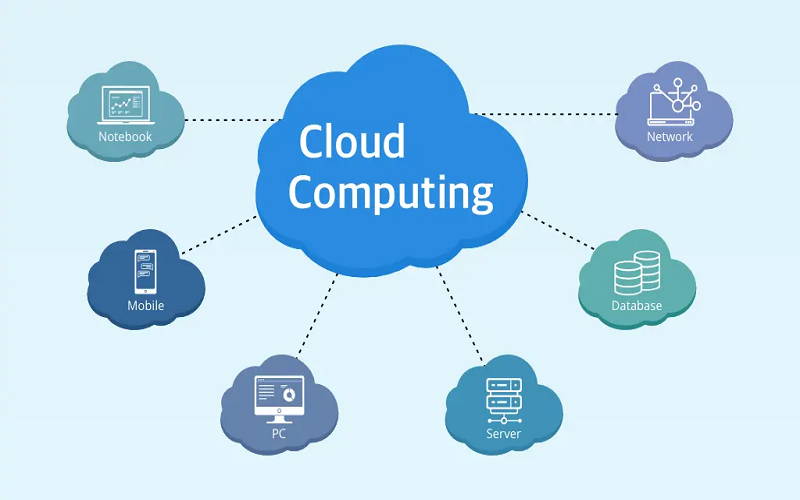In today’s rapidly evolving financial landscape, the efficient servicing of leases stands as a cornerstone of operational success and customer satisfaction. The shift towards automating lease servicing processes isn’t merely a choice but a strategic imperative. Legacy systems, burdened by manual intervention and outdated technologies, pose significant challenges for companies striving to scale operations and deliver exceptional customer experiences.
Ensuring leases are serviced promptly, accurately, and compliantly has become an increasingly complex post-financial crisis, with stringent regulatory requirements adding layers of complexity and cost. Legacy systems struggle to adapt to these evolving regulatory landscapes, exposing companies to compliance risks and operational inefficiencies.
Moreover, customer expectations have soared, demanding seamless interactions and personalized service throughout the lease lifecycle. Legacy systems often falter here, unable to deliver the speed and responsiveness that modern lessees expect.
Communication bottlenecks further compound these challenges, hindering effective collaboration between stakeholders and impacting overall operational efficiency. Data management remains another hurdle, with legacy systems struggling to harness the full potential of data insights for strategic decision-making and operational improvements.
To navigate these challenges and unlock growth opportunities, forward-thinking companies are turning to modern auto finance software. These solutions enable companies to not only meet but exceed customer expectations while ensuring compliance and scalability in a dynamic market environment.
In this blog, we delve into the transformative impact of auto finance automation on lease servicing, exploring how these technologies address legacy challenges and pave the way for enhanced operational efficiency and customer satisfaction.
- Keeping up with dynamic customer experience: Maintaining high levels of customer satisfaction throughout the lease lifecycle is crucial, including the lease servicing phase. During this prolonged phase, customers establish crucial loyalty toward a lender. Ensuring a positive experience for lessees entails promptly and efficiently addressing their desires and requirements concerning their leases.
Lease servicing technology enables lenders to deliver automated communications, including AI-enabled chatbots for frequently asked questions, and personalized interactions through multiple channels, customized offers, timely account updates, and recommendations. Additionally, self-service capabilities through digital portals and mobile apps empower lessees to access accounts, make payments, and track balances. Enhancing the consumer experience in these ways boosts customer satisfaction, fostering increased loyalty, referrals, portfolio growth, and enhanced customer retention.
- Actionabledata-driven insights:Data is the driving force behind modern businesses, and lease servicing is no exception. Advanced analytics software enables lenders to extract valuable insights from the data collected during lease servicing, empowering them to continually enhance their operations. For example, performance data analysis can identify the causes of successful and unsuccessful outcomes, allowing lenders to refine lease approval criteria and identify lease opportunities with minimal risk.
Data insights can be leveraged to customize marketing proposals, develop products and services that best serve customers, enhance strategic planning, identify operational inefficiencies, bottlenecks, and information silos, improve lease performance, drive data-informed decision-making, measure the impact of decisions on operations, optimize processes, and personalize the customer experience. By leveraging data insights, lenders can overcome various lease servicing challenges, enhance competitiveness, and make their operations more agile.
- Keeping up with ever-changing compliance:Adhering to consumer financing regulations has become paramount for lenders, necessitating heightened vigilance and adaptation to evolving standards. Compliance costs have surged post-Great Recession, driven by stringent lending regulations that demand meticulous adherence. Technology now assumes a pivotal role in lease servicing, facilitating continuous monitoring and rigorous auditing processes. This technological integration extends beyond large institutions to encompass smaller regional banks and non-bank servicing entities, which have expanded their involvement in lease management.
While advancements in technology have augmented compliance costs, research underscores that the financial repercussions of non-compliance are more severe for lenders. Integrated servicing technologies equipped with robust auditing functionalities play a crucial role in helping lenders uphold regulatory standards and mitigate compliance risks. Cloud-based auto lending platforms further empower lenders by enabling real-time updates on regulatory changes and facilitating proactive adjustments to operational protocols. Automated monitoring tools are instrumental in identifying potential compliance discrepancies swiftly, enabling prompt remedial actions that safeguard both operational integrity and customer trust.
In addition to technological solutions, fostering a compliance-focused culture across all organizational levels is imperative. Regular training programs, coupled with clear communication channels regarding regulatory updates, bolster staff awareness and responsiveness. Collaborative partnerships with legal advisors and regulatory experts provide further insights into emerging compliance challenges, ensuring continuous alignment with evolving regulatory landscapes. By embracing comprehensive compliance strategies supported by advanced technologies and proactive measures, lenders can navigate complexities effectively while fostering sustainable growth and customer confidence in their services.
- Maintaining prompt, omnichannel communication:Efficient and timely communication is indispensable across all facets of lease servicing, encompassing interactions among lenders, lessees, third-party vendors, and internal teams. Technology plays a pivotal role in facilitating seamless, real-time communication throughout these engagements. While traditional call centers remain vital for addressing complex issues with live representatives, modern communication channels such as instant messaging and AI-driven chatbots effectively bridge gaps, ensuring lessees can update information and seek assistance from any location.
Beyond enhancing direct communication channels, technology fosters collaborative synergy between diverse departments and external vendors, optimizing operational workflows and bolstering teamwork. This collaborative approach not only accelerates decision-making processes but also strengthens internal relationships and external partnerships, promoting organizational cohesion and operational efficiency.
Moreover, efficient internal communication mechanisms are integral to maintaining cohesive operations within the company and ensuring synchronized efforts with outsourcing partners. By leveraging advanced communication technologies, organizations can foster a responsive environment where timely updates, streamlined workflows, and proactive engagement contribute to enhanced service delivery and customer satisfaction.
In today’s dynamic business environment, the integration of robust communication tools not only facilitates immediate resolutions to customer inquiries but also fortifies organizational agility and responsiveness. Embracing a comprehensive, omni-channel communication strategy underscores a commitment to operational excellence and customer-centricity, positioning companies to navigate challenges effectively and cultivate enduring client relationships in the competitive marketplace.
- Ensuring scalability as lease volume grows:Ensuring scalability amid fluctuating lease volumes is facilitated by cloud-based technology, extensively utilized by third-party fintech firms. This technological framework empowers lenders to quickly adjust the scale of their operations in response to shifting economic conditions or regulatory requirements. The agility afforded by cloud solutions is paramount in-service industries, where adaptability is essential for meeting evolving demands and seizing opportunities effectively.
Cloud-based solutions enable lenders to accommodate a diverse range of products and services, adjust to changes in lease volumes, allocate resources effectively, adapt workflows to evolving requirements, respond rapidly to market shifts, and support operational efficiency.
The Role of Modern Auto Finance Software
Modern auto finance software and auto finance solutions are instrumental in simplifying servicing through automation, workflow streamlining, digitizing information, and breaking information siloes within the company.
- Simplifying servicing by automation:Modern auto finance software automates various aspects of the lease servicing process, reducing the need for manual intervention, and minimizing errors. Automation can handle routine tasks such as payment processing, sending reminders, and updating account information, freeing staff to focus on more complex issues.
- Workflow streamlining:Auto finance solutions streamline workflows by integrating different functions into a cohesive system. This integration ensures that all relevant information is available to staff in real-time, enabling them to make informed decisions quickly. Streamlined workflows reduce delays and improve the overall efficiency of the leasing process.
- Digitizing information:Digitizing customer-related information is another significant benefit of modern auto finance software. By converting physical documents into digital formats, companies can easily store, retrieve, and manage information. Digital records are easier to search for, reducing the time spent on administrative tasks and improving the accuracy of data.
- Breaking information siloes:Information siloes can hinder effective communication and decision-making within a company. Modern auto finance solutions break down these siloes by providing a centralized platform where all information is stored and accessible. This centralization ensures that all departments have access to the same data, promoting better collaboration and more informed decision-making.
Automation is transforming the lease servicing process in the asset finance industry. By addressing challenges related to compliance, consumer experience, communication, data insights, and scalability, modern auto finance software and solutions are enabling lenders to operate more efficiently and effectively. These technologies simplify servicing by automating routine tasks, streamlining workflows, digitizing information, and breaking down information siloes. As the industry continues to evolve, the adoption of these technologies will increase, driving further improvements in efficiency and customer satisfaction.

